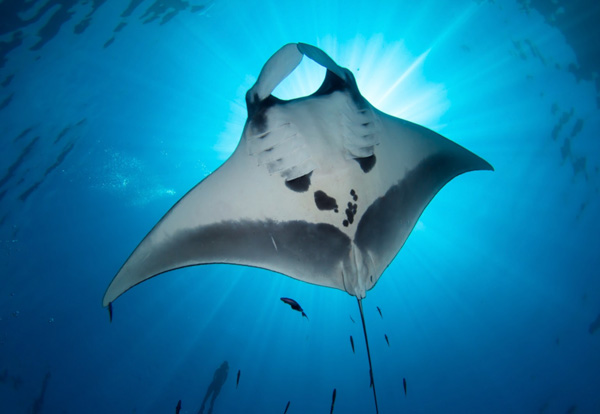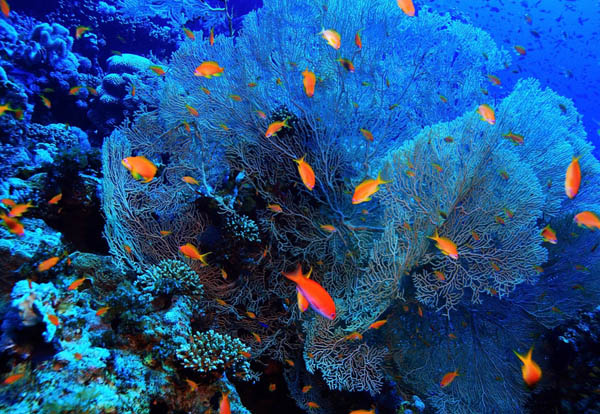A GIANT STEP FOR SMALL FEET
Short, Focused Research Projects for the Primary Grades
Introduction | Background Knowledge | Activities | Extensions

Introduction
The famous American hero, Neil Armstrong, is quoted as saying that "research is creating new knowledge," and research, as defined by Western Sydney University, is "the creation of new knowledge and/or the use of existing knowledge in a new or creative way to generate new concepts…" What do teachers do then with the littlest learners where everything is creating new knowledge? Teachers guide them and provide support for their research experiences. Preschoolers and kindergarteners can research. Even special needs students can research; they just need a great deal of support to do so. Do not be afraid to do a research project with younger students! It is exciting and rewarding and sets them on the path to success as they get older!
Background Knowledge

Research is finding information to establish facts and draw conclusions. Primary aged students can do this at a very basic level. While they are not able to draw conclusions based on research, they are able to make connections to the process and the product. Primary students need specific research tasks to be successful. As an example, a teacher cannot tell a five-year-old to go research a bear. Instead, they can ask the child what new thoughts they want to learn about a bear and then provide a supported experience to find the answers to those questions.
Activities

All About Animals
- Animal research is a great place to start with primary-aged students. This project takes about a week if you do a little every day or about five weeks in a weekly library setting. Begin by talking about how to find information; creating an anchor chart (a visual connection of text, and often hand-drawn images) provides the student a reminder of the text's meanings. Start by creating an anchor chart that shows the students the three ways to locate information: look in a book, look on an iPad or computer, or ask an expert, modeled after Dr. Kristi Meeuwse's blog. (This entire page is a great resource for research at the primary level!)
- Begin the first lesson by talking about how to get information, beyond "asking Google." Identify the library area where they can find nonfiction books - consider it an in-house field trip. Talk about how to use the iPad or computer to find information, being certain to mention the credibility of sources. Discuss what makes a person an "expert" and who other experts are in the school and why that person is an expert.
- For the next class, set a purpose for the activity. Show the students a picture of an unfamiliar animal, like a manta ray. Discuss the things they might want to know about the animal. Guide them to decide that they want to know where manta rays live, what they eat, and what one thing is that they have. Next, make a large graphic organizer on chart paper to fill in the information as they start to gather it. To end this lesson, show a short video of an expert talking about the unfamiliar animal. You can find a video about manta rays here. Facilitate a discussion about what the students learned and add their thoughts to the chart.
- For the next lesson, incorporate a book and the computer as you read an ebook on Epic! (TeachersFirst review). An example of a great book about manta rays is titled Manta Rays: Oceans Alive by Colleen Sexton (ISBN 9781600142673) and is written at about a second-grade reading level, which is perfect for a Kindergarten read aloud! As you read, stop and talk about the text and look for those keywords (LIVE, EAT, and HAVE) and add new information to the anchor chart. From there, the students can move to a place where they can complete their own graphic organizer. They can begin by drawing pictures and then label the pictures as they are able to do so. Make sure that your anchor chart is available for them to use if they choose to.
- Finally, students are ready for the final project! It can be completed with or without technology!
- Non-Technology Approach: Students use craft supplies to make a manta ray. It can be glued onto blue paper to represent the ocean. They copy their statements onto fish and glue the fish around the manta ray. You could also print out sentence frames (Manta rays eat ______) to support writing and encourage the students to write the sounds that they hear in the word that completes the sentence.
- Technology Approach: Try using the Doodle Buddy app to draw pictures of the animal you researched. This app is available for iOS and Android and can also be downloaded from Microsoft for the PC. Provide a common background and airdrop it to each device in your classroom. Revisit the ebook to remember what colors would be best for their drawings. The project is nonfiction, so encourage realism. You could use any drawing app you have available, including ABCYA Paint (TeachersFirst review). ChatterPix Kids is an excellent app that can be used to animate the drawings, and then students can record their voices giving the information. Here is an example from a Kindergarten class as well as a self-contained class with students with autism.
- Lastly, you can spend a few weeks repeating this same activity with different animals. Epic has a feature that allows teachers to create an album as well as books that have a Read to Me function, making the information accessible to emergent or beginning readers. The children can choose a new animal, listen to the book, and complete the familiar graphic organizer, drawing pictures and labeling as they are able. Choose the technology option or the non-technology option for a final product.
- This activity can be adapted for older children by expanding the purpose of reading and asking students to identify more information from the book and the expert. The students can rely less on pictures and more on print in both the reading and graphic organizers.
- Standards:
- ISTE Standards for Students: Knowledge Constructor 3a. Students plan and employ effective research strategies to locate information and other resources for their intellectual or creative pursuits.
- ISTE Standards for Students: Creative Communicator 6a. Students choose the appropriate platforms and tools for meeting the desired objectives of their creation or communication. 6b. Students create original works or responsibly repurpose or remix digital resources into new creations.
- ISTE Standards for Students: Creative Communicator 6d. Students publish or present content that customizes the message and medium for their intended audience.
- AASL National School LIbrary Standards: Inquire Shared Foundation, Create Domain, Learners engage with new knowledge by following a process that includes: 1. Using evidence to investigate questions. 2. Devising and implementing a plan to fill knowledge gaps. 3. Generating products that illustrate learning.
- AASL National School Library Standards: Curate Shared Foundation, Think Domain, Learners act on an information need by: 1. Determining the need to gather information. 2. Identifying possible sources of information. 3. Making critical choices about information sources to use.
- AASL National School Library StandardsL Curate Shared Foundation, Create Domain, Learners gather information appropriate to the task by: 1. Seeking a variety of sources.
The Perfect Animal
- As students move up in grades, they become more confident and independent with research. This activity uses a gradual release model and collaboration to encourage students to think critically to create the Perfect Animal.
- Begin by reading What If You Had Animal Teeth? By Sandra Markle (ISBN 9780545567275), looking at each animal and discussing their teeth. Discuss the benefits and limits of each tooth type and how that type of tooth was useful to the animal. Work together to create a graphic organizer, making sure to consider each animal presented in the book. This activity can be modeled or a shared pen activity, allowing the students to add their ideas to the class graphic organizer, depending on time and the students' abilities. Finally, discuss how to decide which is the best. You can take the students' input and make a checklist or rubric for decision making. The checklist or rubric can be done on paper or with a Google Form (TeachersFirst review) or a rubric creator, such as ForAllRubrics (TeachersFirst review). Students will use these later in the process.
- The next step is to split students up into expert groups. These groups will then work to complete a graphic organizer for a different animal part. Groups will use the other books in Sandra Markle's series. You can use as many or as few of these resources as you have available. Each group will focus on one book, making them experts in that animal body part.
- These expert groups will then split up into animal groups. Each animal group should have at least one member from each expert group. Using the completed graphic organizer from What If You Had Animal Teeth? lead the groups through the process of choosing the perfect teeth. Model how to use the rubric or Google Form and allow time for the groups to select the perfect animal teeth. Each expert then presents the information that they learned about their specific body part. The members of each animal group work together to analyze the information to determine which animal has the perfect body part. The groups can use the rubric the class created together, or use discussion and consensus. Teams have to justify their answers. (For example, the beaver has the perfect teeth because they are sharp and are orange, so they will scare predators away.)
- After the students have chosen each of the perfect body parts, they are ready to create the perfect animal.
- Non-Technology Approach: Students can use old magazines or printed stock pictures to create an animal. They can label the picture with sentences to tell which body part they picked and why.
- Technology Approach: They can also use the cut and paste feature on a device and create a slideshow in Google Slides (TeachersFirst review) or a movie in iMovie or another movie making program such as FlexClip (TeachersFirst review) or Moovly (TeachersFirst review). You can find an example of a finished product here.
- This activity can be adapted to meet the needs of younger students. Similar to the animal research project for kindergarten, the students can complete the perfect animal through whole-class read alouds. The group can make a class animal or split into smaller groups to discuss the information and make decisions. Older students can work independently or extend the research process to find more information about the animal's body part that they chose. (For example, using Encyclopedia Britannica, a student can find that the beaver's lips close behind the teeth, which keeps water out of the animal's mouth while swimming.)
- Standards:
- ISTE Standards for Students: Knowledge Constructor 3a. Students plan and employ effective research strategies to locate information and other resources for their intellectual or creative pursuits.
- ISTE Standards for Students: Creative Communicator 6a. Students choose the appropriate platforms and tools for meeting the desired objectives of their creation or communication. 6b. Students create original works or responsibly repurpose or remix digital resources into new creations.
- ISTE Standards for Students: Creative Communicator 6d. Students publish or present content that customizes the message and medium for their intended audience.
- AASL National School LIbrary Standards: Inquire Shared Foundation, Create Domain, Learners engage with new knowledge by following a process that includes: 1. Using evidence to investigate questions. 2. Devising and implementing a plan to fill knowledge gaps. 3. Generating products that illustrate learning.
- AASL National School Library Standards: Curate Shared Foundation, Think Domain, Learners act on an information need by: 1. Determining the need to gather information. 2. Identifying possible sources of information. 3. Making critical choices about information sources to use.
- AASL National School Library StandardsL Curate Shared Foundation, Create Domain, Learners gather information appropriate to the task by: 1. Seeking a variety of sources
Extensions

Research should always have a purpose. The purpose can tie back into the curriculum or support decisions in a project-based classroom. The more authentic you can make the activity, the more meaningful it will be for the students.
- Classroom Habitats -What could you do with those last few school weeks when students need a high-interest activities curriculum? Turn your classroom into a habitat! This activity can be a grade level or team project! Each class chooses a habitat to display, and then the students get to work learning about the habitat. This undertaking is a great project-based learning experience adapted to your classroom and your district's rules. You can go big and make an immersive experience. After checking with your administration to ensure that you are not violating any school or district rules, make huge animals out of bulletin board paper and hang them from the ceiling. Make it 3D with the extra pages of the consumable textbooks. If that is a little adventurous, paint a plain sheet or shower curtain to look like your habitat. Hang it from the chalkboard, whiteboard, or bulletin board. Students can add plants and animals to the background. Either option will encourage students to learn more about the habitat, but don't forget to practice scale as they work to fit all of their ideas into the space, be it the entire classroom or a king-king sized sheet. Once the classroom has been transformed, the students can write paragraphs to explain what visitors will see. Invite neighboring classes to tour your habitat with your students as their tour guides. This project-based experience is cross-curricular and so much fun; your students will not realize how hard they are working!
-
Expert of the Day - Students ask questions all day! Designate one student to be the expert of the day. This student can answer all of the unanswered questions that the students ask. Younger learners will need help with the process, but this could be integrated into rotation during the reading block or could take a few minutes during homeroom (to answer the questions from the day before) or dismissal (if you are a time management genius!) This gives each student a little bit of one on one research instruction every month (or so).
- ISTE Standards for Students - Knowledge Constructor - 3d. Students build knowledge by actively exploring real-world issues and problems, developing ideas and theories and pursuing answers and solutions.
- ISTE Standards for Students - Knowledge Constructor 3c. Students curate information from digital resources using a variety of tools and methods to create collections of artifacts that demonstrate meaningful connections or conclusions
- AASL National School Library Standards - Inquire Shared Foundation, Think Domain - Learners display curiosity and initiative by: 1. Formulating questions about a personal interest or a curricular topic.
- AASL National School Library Standards - Curate Shared Foundation - Think Domain - Learners act on an information need by: 1. Determining the need to gather information. 2. Identifying possible sources of information. 3. Making critical choices about information sources to use.
